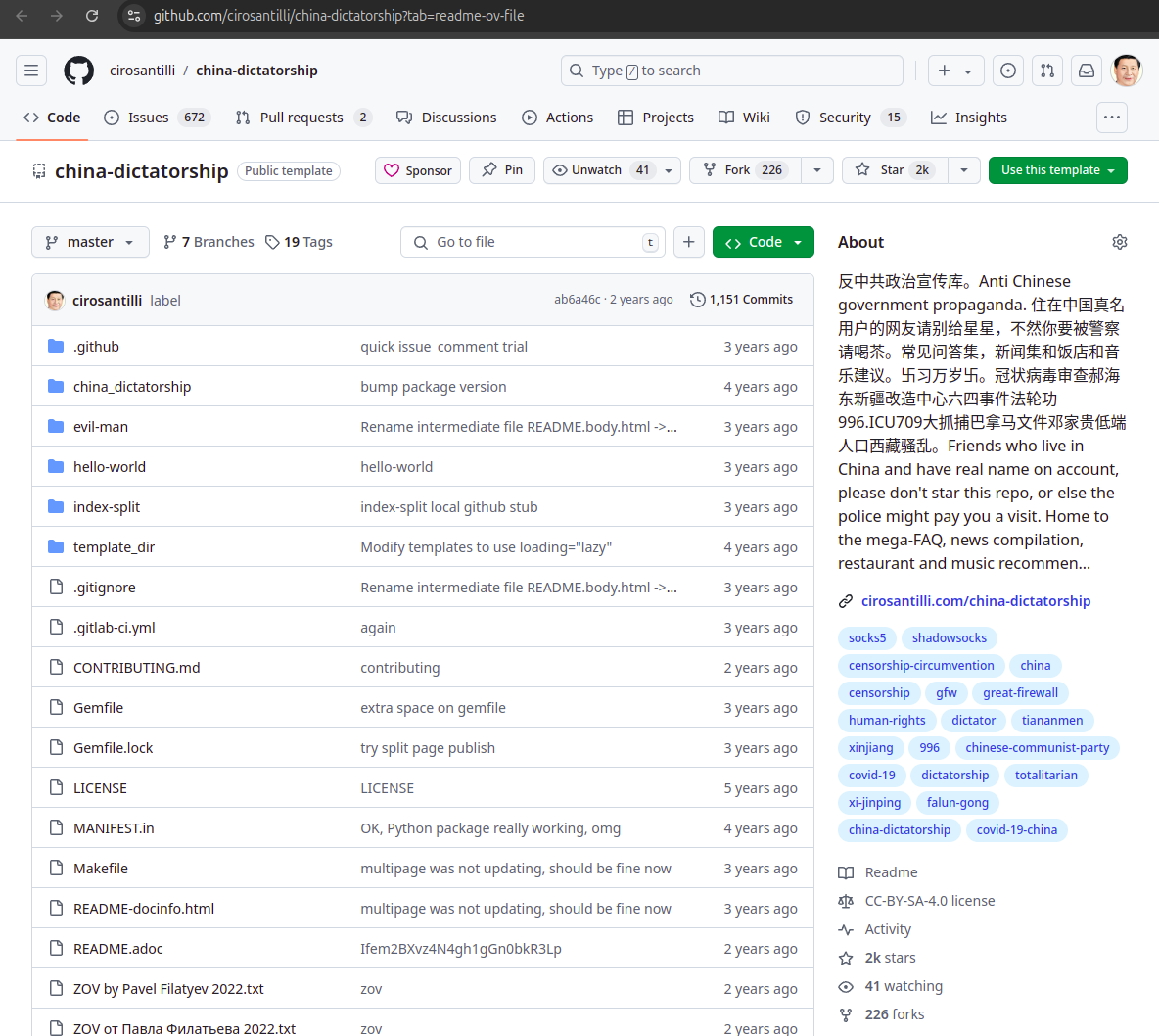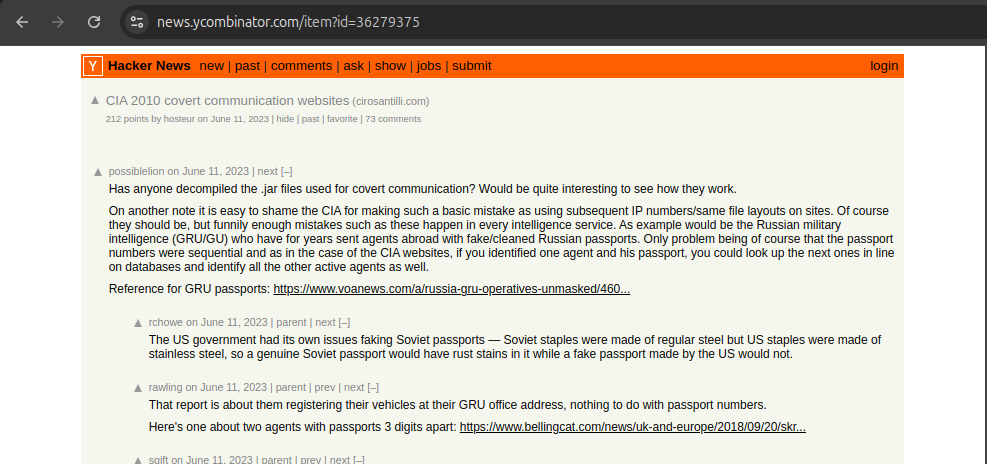Aratu Week 2024 Talk by Ciro Santilli: My Best Random Projects Collateral freedom by  Ciro Santilli 37 Created 2024-09-03 Updated 2025-07-16
Ciro Santilli 37 Created 2024-09-03 Updated 2025-07-16
Aratu Week 2024 Talk by Ciro Santilli: My Best Random Projects Cute cat theory of digital activism by  Ciro Santilli 37 Created 2024-09-03 Updated 2025-07-16
Ciro Santilli 37 Created 2024-09-03 Updated 2025-07-16
Aratu Week 2024 Talk by Ciro Santilli: My Best Random Projects Other projects by  Ciro Santilli 37 Created 2024-09-03 Updated 2025-07-16
Ciro Santilli 37 Created 2024-09-03 Updated 2025-07-16
Aratu Week 2024 Talk by Ciro Santilli: My Best Random Projects Linux Kernel Module Cheat by  Ciro Santilli 37 Created 2024-09-03 Updated 2025-07-16
Ciro Santilli 37 Created 2024-09-03 Updated 2025-07-16
Aratu Week 2024 Talk by Ciro Santilli: My Best Random Projects China Dictatorship by  Ciro Santilli 37 Created 2024-09-03 Updated 2025-07-16
Ciro Santilli 37 Created 2024-09-03 Updated 2025-07-16
Aratu Week 2024 Talk by Ciro Santilli: My Best Random Projects Ciro's Bitcoin Inscription Museum by  Ciro Santilli 37 Created 2024-09-03 Updated 2025-07-16
Ciro Santilli 37 Created 2024-09-03 Updated 2025-07-16
Aratu Week 2024 Talk by Ciro Santilli: My Best Random Projects OurBigBook.com by  Ciro Santilli 37 Created 2024-09-03 Updated 2025-07-16
Ciro Santilli 37 Created 2024-09-03 Updated 2025-07-16
Everything is open source
. Source. Aratu Week 2024 Talk by Ciro Santilli: My Best Random Projects CIA 2010 covert communication websites by  Ciro Santilli 37 Created 2024-09-03 Updated 2025-07-16
Ciro Santilli 37 Created 2024-09-03 Updated 2025-07-16
Updates duty-machine news on china-dictatorship issues by  Ciro Santilli 37 Created 2024-09-03 Updated 2025-07-16
Ciro Santilli 37 Created 2024-09-03 Updated 2025-07-16
Whenever a user creates an issue or comment on China Dictatorship, the bot now automatically creates a new issue with one of the latest news from Duty Machine: github.com/duty-machine/duty-machine
Sample created issue: github.com/cirosantilli/china-dictatorship/issues/1322 Script: github.com/cirosantilli/china-dictatorship/blob/ab6a46c511afaaf6c9e68ba8813c2b2cf9d9638c/action.js#L195
Duty Machine is a bot repo that automatically scrapes Chinese language news from major news outlets such as the New York Times or Radio Free Asia which ensures that China Dictatorship news will always be new.
It's the war of the anonymous bots against the little pinks, part of asymmetric information warfare: cirosantilli.com/china-dictatorship/asymmetric-information-warfare
Announcements:
Update September 2024: GitHub blocked the China Dictatorship bot
Update March 2025: duty-machine was DMCA'ed on February 2025: github.com/duty-machine/news by, surprise surprise, a Chinese copyright owner "Sanlian News" github.com/github/dmca/blob/master/2025/02/2025-02-27-sanlian-news.md I noticed because it broke my Action on another repo: github.com/orgs/community/discussions/154227 Announcements:
Bibliography:
- stackoverflow.com/questions/37147480/convert-fingerprint-bitmap-to-iso-iec-19794-2-template
- stackoverflow.com/questions/33412977/how-to-convert-a-byte-array-of-fingerprint-image-to-iso-19794-2-in-java-basica
- stackoverflow.com/questions/43937986/convert-png-image-fingerprint-to-minutiae-xyt-fingerprint-format
Possibly not made not possible from userland due to privacy issues. Apparently not even kernelland can see it, only
Bibliography:
- Stack Overflow:
- stackoverflow.com/questions/35934729/capture-fingerprint-from-smartphone-and-save-to-a-file
- stackoverflow.com/questions/63257762/how-to-save-and-compare-2-fingerprints-on-android
- stackoverflow.com/questions/67104186/can-we-use-android-fingerprint-scanner-to-get-finger-pattern-and-store-that-patt
- stackoverflow.com/questions/41632225/android-where-and-how-securely-is-fingerprint-information-stored-in-a-device
- android.stackexchange.com/questions/161780/where-does-android-store-fingerprint-data
- Reddit:
They actually use fingerprint minutiae, not raw images, which is cool.
Unlisted articles are being shown, click here to show only listed articles.





